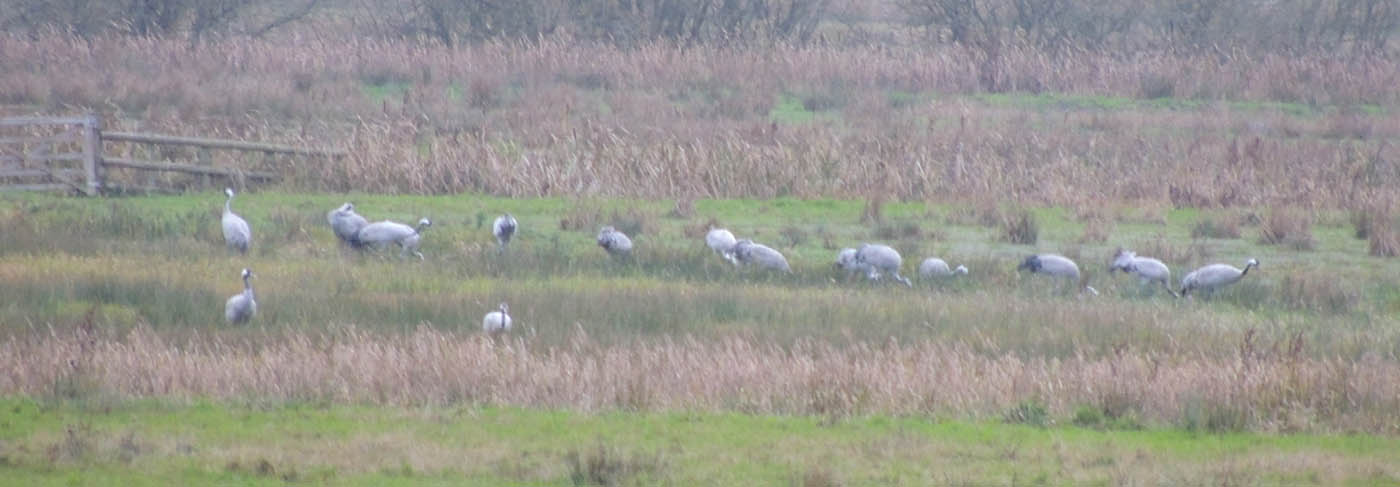Celebrating 21 years delivering clear, impartial and accurate advice on environmental planning for land use and development.
Visiting Cranes
In November 2015 we set off on a staff outing come adventure to the Somerset Levels in order to catch a glimpse of a rare and elusive bird, once common and widespread in the UK only a few centuries ago. Why travel all the way to Somerset? Earlier in the summer we recruited a new assistant ecologist, Jenny Pearson, who had recently finished studying for her MSc at the University of Exeter, Penryn Campus. During her studies she undertook a research project on the foraging behaviour of the Common Crane Grus grus in connection with the RSPB’s Great Crane Project. Through reintroduction these once extinct birds are making a bold comeback in the Somerset Levels.
Previously small numbers of these birds naturally recolonised parts of the Norfolk Broads and further reintroductions have enabled the Common Crane to thrive here.
After Jenny conveyed her enthusiasm for the project and the remarkable comeback of the Common Crane we wanted to learn more about the conservation science behind the project. After a busy summer survey season we were also ready to relax a bit, so piling into the back of a minibus we headed up to the Levels for a leisurely stroll in the countryside to see if we could spy a crane or two.
We met with a very friendly and enthusiastic RSPB volunteer who had dutifully been out prior to our arrival to see if he could find the crane’s whereabouts. But to no avail. He could find no trace of the 57 strong flock that had been spotted in the area only the day before. Ever the tenacious Ecologists we were determined to enjoy our day out in the Levels and so on we went accompanied by our local expert to seek out the birds. Marsh Harrier, Peregrine, Lapwing and Wigeon were all added to our day’s list, but not Common Crane.
After several hours scouring the fields and the skies with our telescopes and binoculars in hand, as it was about to get dark, we decided it might be worth visiting a local Starling roost in the hopes of glimpsing another spectacle instead.
We had not left our previous hideout for mere minutes and were back in the minibus en-route to the Starling roost when something extraordinary happened. Some of us noticed a strange, linear formation high up in the sky moving towards us. Steadfast and getting larger by the second there were shouts from the minibus of “Jenny – is that the kind of formation that cranes fly in?” It was not long before our questions were answered. These were in fact the Common Cranes we had traipsed all this way to see, their enormous wings black against the fading light of the autumn sky.
Trumpeting softly and with trailing legs, the flock of 50 or so birds headed back towards the field we had just been searching and promptly landed. We quickly bundled back into the bus and headed back to where we started. In the twilight we found them foraging on a wetland and spent the remaining daylight enjoying the visual spoils of the day.




